The Mind of a bilingual
Bilingualism, defined by the Cambridge Dictionary, is the ability to use or speak two languages—a simple definition that encompasses a universe. How does one seamlessly shift between two linguistic realms? What dance of languages occurs deep in the connective tissues of a bilingual brain? Let’s dive, figuring out the intricate interplay of not only translations but also cultures, expressions, and symbols.
The National Center for Biotechnology Information highlights in a comprehensive article that bilingualism not only enriches the cognitive development of children but also endows them with more efficient brains compared to their monolingual counterparts. The Washington Post reinforces this notion by asserting that bilingual individuals demonstrate heightened proficiency in advanced cognitive functions, excelling in tasks that involve ignoring irrelevant information. Anca Ulea, in her insightful post on Euronews Culture, delves into the multifaceted benefits of embracing multilingualism. This article will explore the advantages of being bilingual and why the current society needs the bilingual mind more than ever.
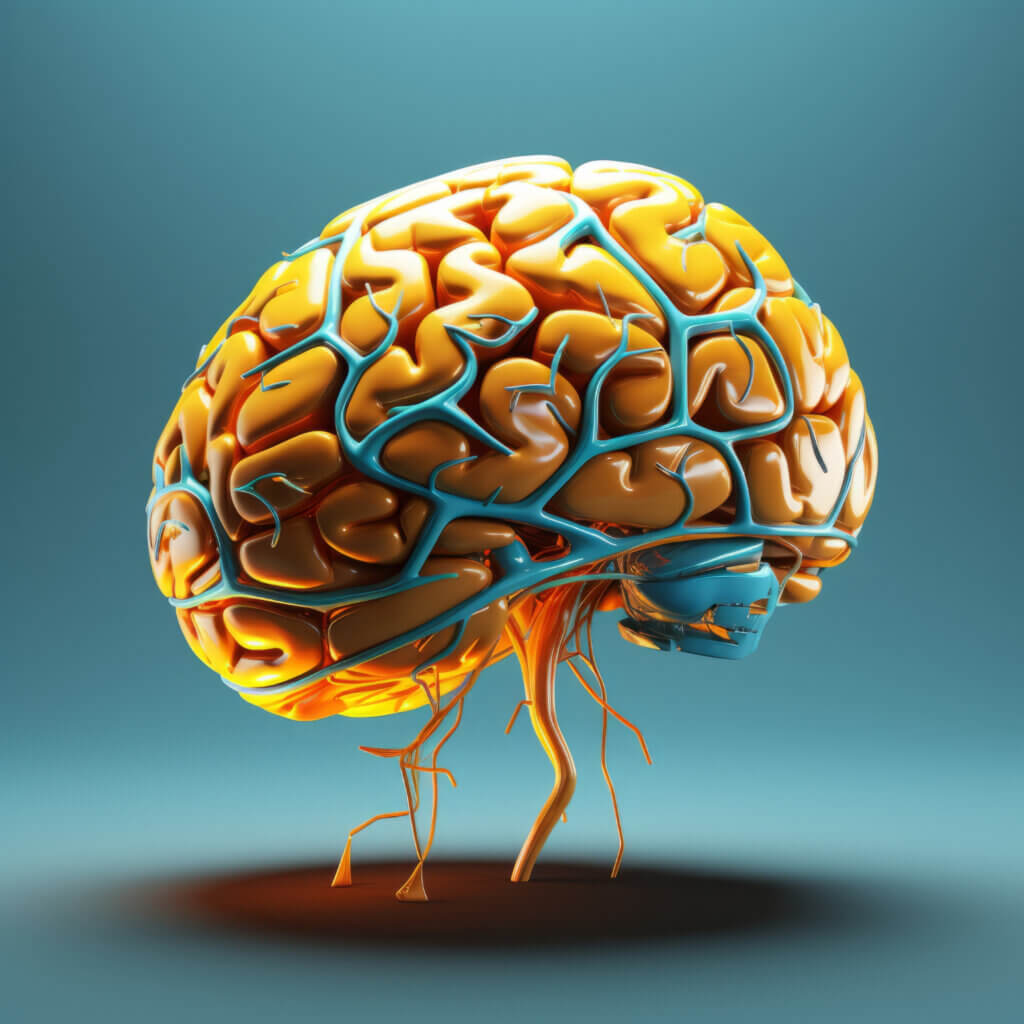
Processing Power of Bilingual Minds
“To have another language is to possess a second soul.”
Charlemagne
One intriguing facet of bilinguals is the ability to process information in parallel. They demonstrate a remarkable capacity to think, engage, and decipher information from multiple sources simultaneously, using the references that exist within the languages they speak. This inherent multitasking skill propels their cognitive mechanisms to operate almost exponentially faster than their monolingual counterparts, offering a compelling glimpse into the cognitive advantages of bilingualism. Moldovan-American psycholinguist Viorica Marian reveals that every new language we learn shapes the way we extract and interpret information, how we perceive ourselves and the world around us, and even the decisions we make and the actions we take. In her book “The Power of Language: Multilingualism, Self, and Society,” Marian discusses how multilingualism enhances creativity, brain health, and cognitive control. Learning different languages rewires our brains and creates a denser tapestry of connectivity.
“One language sets you in a corridor for life. Two languages open every door along the way.”
Frank Smith
Childhood Bilingualism: Debunking the Myth of Confusion
According to the study highlighted in the National Center for Biotechnology Information, there’s a longstanding belief that childhood bilingualism could have negative effects on developing minds, with concerns that learning two languages might be confusing. However, a pivotal study by Peal and Lambert challenges this notion. The study compared French-speaking monolingual children with English-French bilingual counterparts in Montreal. Surprisingly, the bilingual children outperformed their monolingual peers on various tests, particularly those requiring symbol manipulation and reorganization.
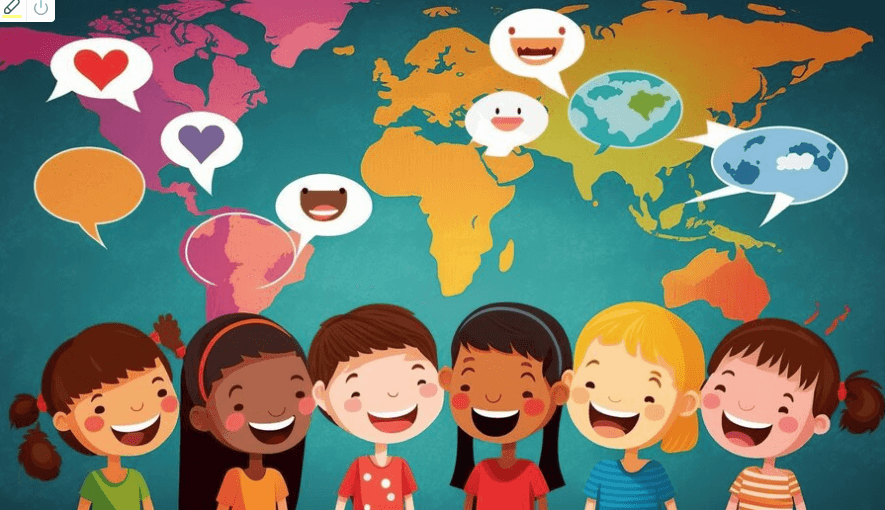
“A different language is a different vision of life.”
Federico Fellini
This unexpected difference has led to further exploration, revealing a significant advantage for bilingual children in solving linguistic problems that involve understanding concepts such as the difference between form and meaning, known as metalinguistic awareness, and non-verbal problems that demand the ability to ignore misleading information. The advantages extend into conflict resolution tasks, with bilingual children consistently outperforming monolinguals in studies involving perceptual distraction.
Bilingualism in Adults: Anti-ageing Factor
The advantages of bilingualism don’t seem confined to childhood. Studies with older adults indicate that bilingualism may act as a protective factor against the decline in attentional control associated with ageing. In an experiment involving middle-aged and older adults, bilinguals demonstrated smaller Simon effects, a measure of attentional control, compared to their monolingual counterparts. Additionally, the study suggested that bilinguals might acquire the skill of inhibiting distracting stimuli more rapidly than monolinguals.

These findings highlight the cognitive advantages of bilingualism, showing that it not only shapes cognitive functions in childhood but also provides protective benefits against cognitive ageing in later years. The ability to process information in parallel and efficiently manage attentional control seems to be a remarkable cognitive asset gained through bilingualism.
Unlocking a wealth of cognitive advantages, parallel processing emerges as a powerhouse in the domains of science, technology, and critical thinking. This dynamic skill set positions bilingual individuals not just as participants, but as leaders in these areas—a topic we’ll delve into in more detail.
Applications in Science, Technology, and Critical-Thinking
Problem-Solving in Science:
In scientific research, bilingual scientists may excel in designing experiments that require the manipulation and interpretation of complex data. Their ability to navigate multiple perspectives allows them to approach problems creatively.
At the age of 28, Sabrina Gonzalez Pasterski boasts a remarkable list of achievements. Recognized as the youngest individual at 14 to construct, certify, and conduct the maiden flight of an aeroplane, she continued her academic journey in physics at MIT. A recipient of the prestigious MIT Physics Orloff Scholarship, Sabrina has been heralded as the next Einstein. Beginning her Ph.D. in physics at Harvard at the age of 24, she garnered attention in 2015 for her solo research paper on electromagnetic memory, a work cited by none other than Stephen Hawking in his subsequent research. Pasterski’s motivating philosophy centres on the belief that if others can accomplish a task, she too can achieve it.

Innovations in Technology:
Bilingual individuals can bring a unique perspective to technology development. Their parallel thinking skills enable them to consider diverse user experiences and cultural nuances, leading to the creation of more inclusive and adaptable technological solutions.
Professor Pedro A. Sanchez, a trailblazer in soil science, has pioneered research aimed at enhancing soil quality and increasing food production in developing nations. Credited for catalysing the Green Revolution, his impactful work has saved the lives of 15 million people in impoverished countries from starvation. Sanchez advocates for self-sufficiency, demonstrating that one can break free from dependency on a flawed system by mastering the art of cultivating the land and growing one’s own food. Noteworthy is his proficiency in four languages—French, English, Spanish, and Italian—underscoring his truly multilingual expertise.
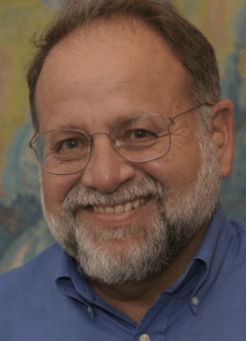
Cross-Cultural Communication:
“Language is the road map of a culture. It tells you where its people come from and where they are going.”
Rita Mae Brown
In globalized industries, bilingual professionals with parallel thinking skills play a crucial role in facilitating effective cross-cultural communication. They can bridge gaps in understanding and contribute to successful collaborations.
Interestingly, Viggo Mortensen, a renowned actor celebrated for his role in the Lord of the Rings Trilogy, shared insights into his diverse linguistic background. According to him, his upbringing in Argentina involved conversing in Spanish and English within his family. Additionally, due to his Danish father and American mother, he was raised speaking Danish. At the age of 11, Mortensen relocated to upstate New York, where he added Canadian French to his repertoire of languages. “I have a multicultural background, so I tend to have an open mind about things, and I find other cultures interesting,” he says. The cross-cultural particularity of Mortensen gives him the expertise we all love in the roles he plays.

Multifaceted Critical Thinking:
Bilingualism enhances critical thinking by promoting the analysis of information from different linguistic and cultural angles. In fields like philosophy or ethics, bilingual individuals may approach complex ethical dilemmas with a nuanced understanding, considering various cultural perspectives.
Jacques Derrida was a French philosopher from an Algerian background who wrote in French and also spoke and wrote in English. He was known for his influential work in deconstruction, and
his writings were heavily influenced by his engagement with Anglo-American philosophy. Derrida’s work serves as a testament to the intellectual prowess and unique perspective that bilingualism brings to critical thought. His ability to navigate and contribute to diverse linguistic realms exemplifies how embracing multiple languages can deepen and broaden one’s approach to philosophical inquiry, fostering a richer understanding of complex ideas.
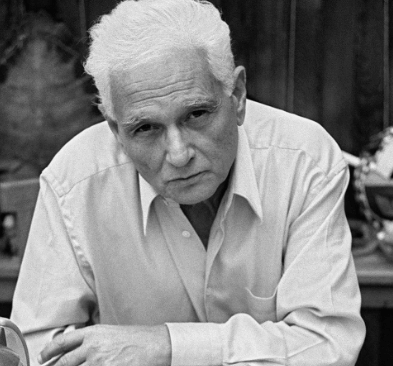
Data Analysis and Interpretation:
Bilingual scientists and analysts may be particularly adept at interpreting data from diverse sources. This skill is valuable in fields such as data science, where the ability to synthesize information from various linguistic contexts can lead to more comprehensive insights.
Jonathan Mboyo Esole, an associate professor of mathematics at Northeastern University, specializes in the geometry of theoretical physics, particularly focusing on F-theory—a branch of String theory that intersects with mathematics. Fluent in French, English, and Lingala, a language native to some Central African countries, Esole’s contributions extend beyond academia. Following the 2021 eruption of Mount Nyiragongo, he initiated the Linda Project, a platform dedicated to supporting African scientists, technologists, and entrepreneurs. The project facilitates training, provides equipment, and advocates for open-science research, emphasizing the importance of African ownership and control over data and scientific tools. Notably, in May 2022, the Linda Project played a pivotal role in establishing the first Congolese-owned seismic network for monitoring Mount Nyiragongo and Mount Nyamulagira, with Esole himself designing the telemetry of the network.
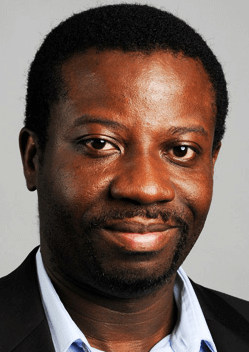
Inclusive Design Thinking:
In design and innovation, bilingual thinkers contribute to inclusive design processes. They can anticipate and address the needs of diverse user groups, ensuring that technological advancements are accessible and beneficial for people with varied linguistic and cultural backgrounds.
Benny Lewis has gained online fame as a beloved internet “language hacker” and the founder of the widely acclaimed website, fluentin3months.com. Renowned for his entertaining approach to language acquisition, Benny offers a range of courses on his website that immerse learners directly into the language-learning process. Beyond structured courses, his blog posts and bestselling book draw from his personal experiences. Benny’s unique language-learning strategy incorporates effective hacks and methods (spaced repetitions, podcasts, learning from conversation) designed to have individuals speaking fluently in a remarkably short span of time.

Efficient Multitasking in Research:
Bilingual researchers may demonstrate efficient multitasking when conducting reviews, analyzing studies in multiple languages simultaneously. This capability can lead to a more comprehensive understanding of a research topic.
Ynes Mexia, a prominent Hispanic American scientist, stands as one of the most celebrated figures in her field. Born to a Mexican diplomat father, she navigated her early years as a social worker before discovering her passion for botany at UC Berkeley. Fluent in both English and Spanish, Ynes faced the challenges of being a professional Hispanic woman in the early 20th century. Undeterred, she embarked on an extraordinary journey between the 1910s and 1920s, exploring Mexico, South America, and Alaska and documenting her research in English while interacting with a Hispanic society. In a span of 13 years, she collected a staggering 145,000 plant specimens, resulting in the discovery of two new plant genera and 500 new plant species. This fearless explorer’s legacy lives on, with 50 plant species named in her honor.

In light of this, the global relevance of bilingual individuals becomes evident. This is where institutions like the British and French Academy come into play, serving as innovative hubs that nurture the next generation of minds skilled in parallel thinking. These schools provide a structured environment where students effortlessly navigate through two languages.
The Role of Bilingual Schools
Schools that cultivate bilingualism from an early age create a vibrant learning space where parallel thinking isn’t just endorsed but ingrained as an essential aspect of a student’s cognitive toolkit.
British and French Academy
At institutions such as the British and French Academy (Brif), a curriculum that seamlessly intertwines both French and English is implemented concurrently. This unique approach ensures that students attain proficiency in both systems. The francophone curriculum, inspired by that of Benin Republic, and the anglophone curriculum, derived from the British system, generate a linguistic and cultural combination within the minds of students, preparing them to assume influential roles in the society of tomorrow.
“To learn a language is to have one more window from which to look at the world.”
Chinese Proverb
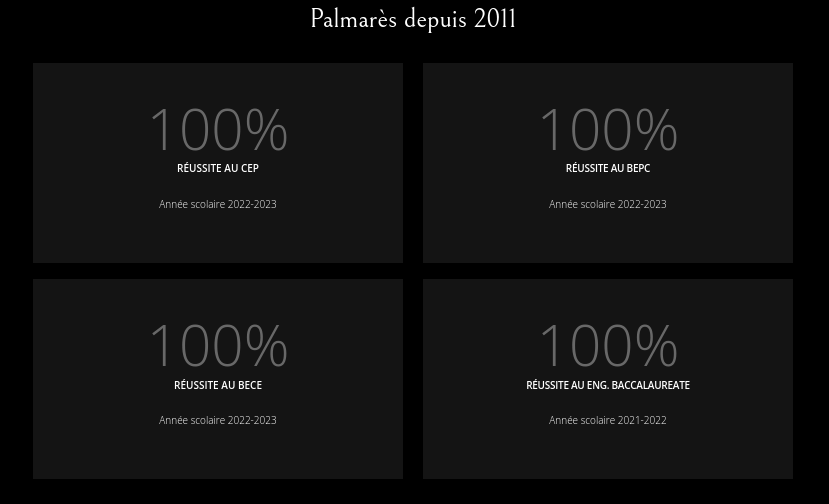
By immersing students in this dual-language curriculum, British and French Academy fosters an environment promoting cross-cultural understanding and intellectual adaptability. The initial graduates of British and French Academy have transitioned into diverse professional domains. Some have ventured into design within the Francophone sphere, leveraging their bilingual skills. Others have delved into cybersecurity, enhancing their linguistic repertoire by mastering Portuguese. Additionally, some others are making strides in international sales, skillfully connecting the Nigerian and Beninese markets through their proficiency in both French and English.
Bilingual schools like Brif assume a pivotal role in equipping the next generation for the challenges of our interconnected world, where success in science, technology, and critical thinking demands a nuanced and flexible approach. Explore success stories at British and French Academy.
Within these bilingual learning environments, students not only cultivate a profound appreciation for multiple languages but also hone an advanced ability to navigate the intricacies of diverse fields. The integration of parallel thinking becomes second nature, shaping future scientists, technologists, and critical thinkers who effortlessly bridge linguistic and cultural divides. Unlock the doors to a world of possibilities through bilingual education! Whether for yourself or your children, the benefits are immense. Embrace the journey of language learning, and witness the transformative power it brings.
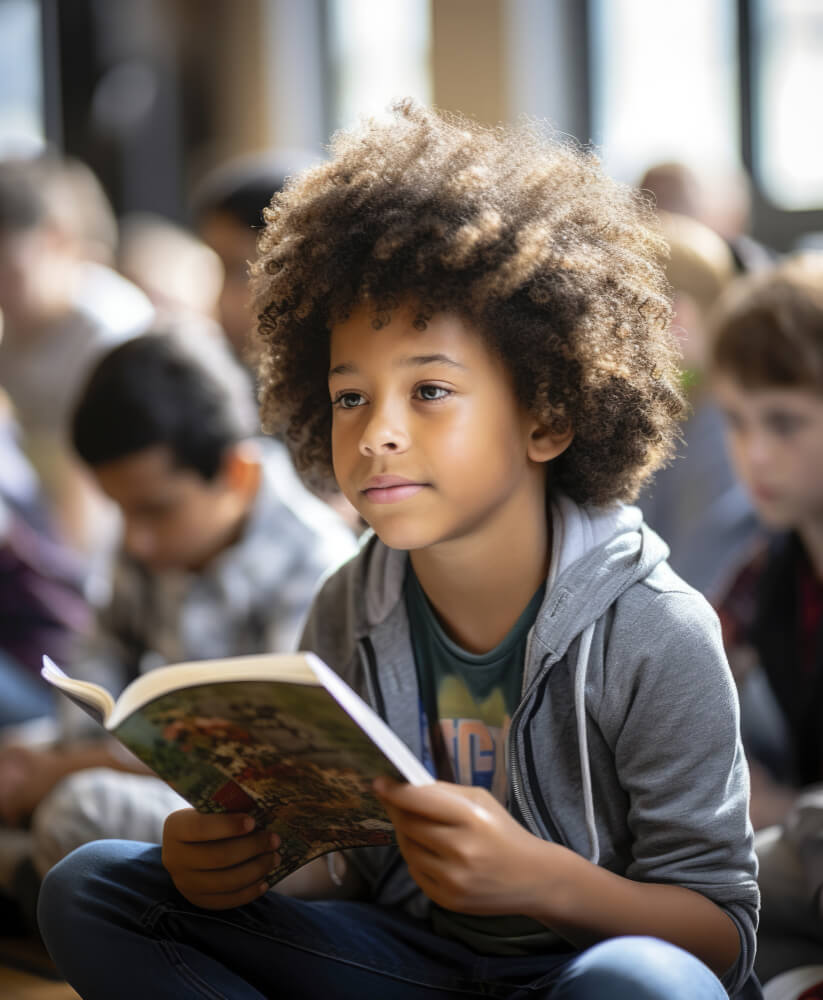
End Thoughts
In conclusion, the journey through the mind of a bilingual has unraveled a tapestry of cognitive advantages with far-reaching implications. Bilingual individuals, possessing the ability to process information in parallel, emerge as powerful thinkers capable of navigating the complexities of our interconnected world.
The applications of bilingualism in science, technology, and critical thinking underscore the invaluable contributions of bilingual minds. From designing experiments to inclusive design thinking, bilingual individuals bring a unique and nuanced perspective to the forefront of innovation.
Crucially, the role of bilingual schools, exemplified by institutions like the British and French Academy, stands out as a key driver in shaping the minds of the future. These schools not only endorse parallel thinking but ingrained it as an essential aspect of a student’s cognitive toolkit. The dual-language curriculum implemented by institutions like Brif creates a linguistic and cultural amalgamation, preparing students to navigate the complexities of a globalized world.
It is evident that bilingualism is not just beneficial for individuals but is a catalyst for societal progress. As we recognize the cognitive advantages of bilingualism, the call to promote and prioritize bilingual education becomes clear. Bilingualism is not merely a skill; it is a force shaping the intellectual landscape of generations to come.
Why don’t you consider learning a new language today? Join the dynamic world of bilingualism. We’d love to hear about your language-learning journey, so share your thoughts and experiences in the comments, and don’t miss an opportunity to embark on your bilingual journey today!




